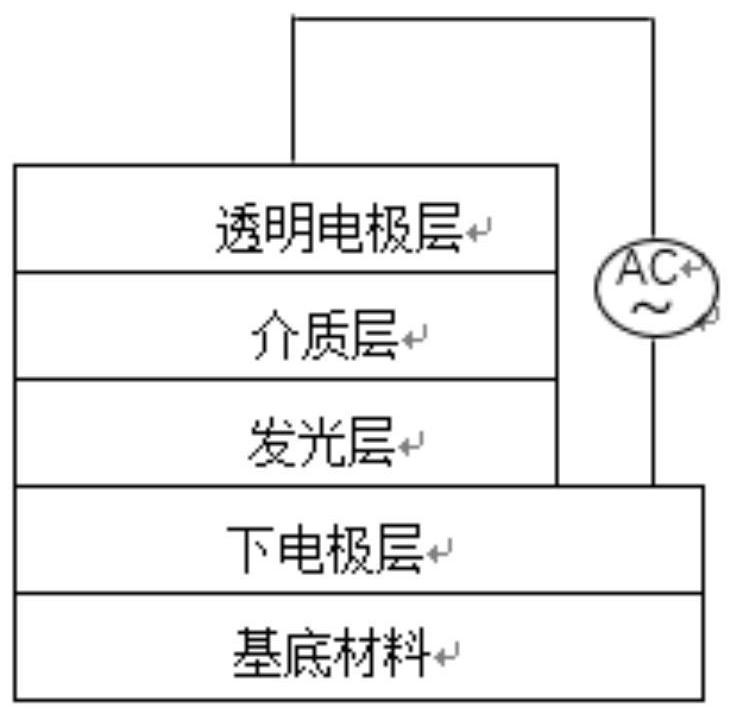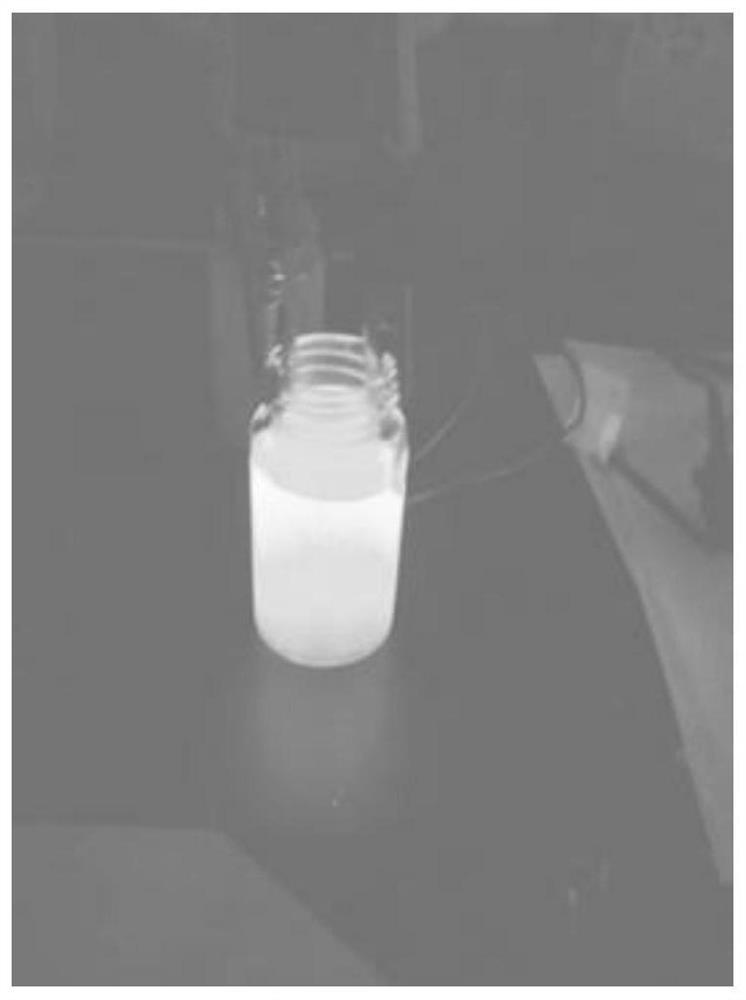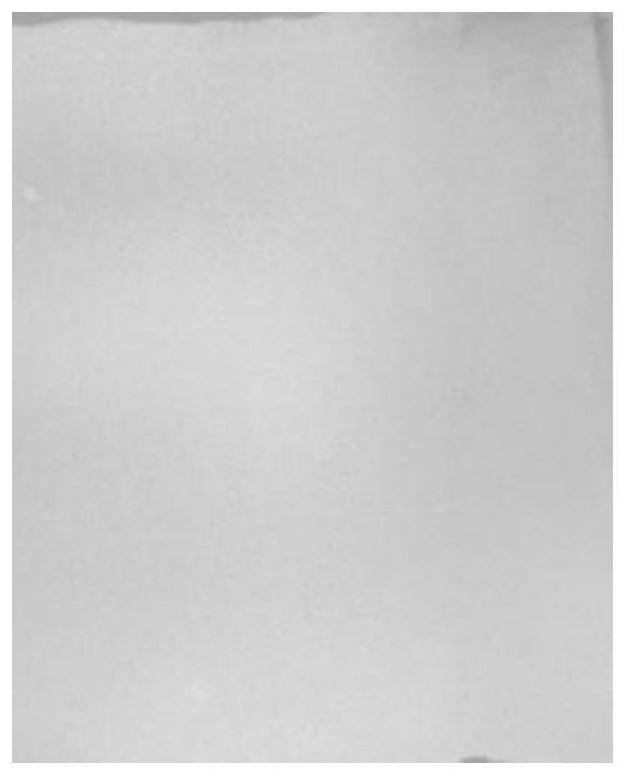A method of making a three-dimensional inorganic electroluminescent device
An electroluminescent device and inorganic technology, which is applied in the field of manufacturing three-dimensional inorganic electroluminescent devices, can solve problems such as the inability to prepare continuous light-emitting films on three-dimensional surfaces, and achieve good luminous effects and simple preparation processes
- Summary
- Abstract
- Description
- Claims
- Application Information
AI Technical Summary
Problems solved by technology
Method used
Image
Examples
Embodiment 1
[0049] A method for making a three-dimensional inorganic electroluminescent device, comprising the steps of:
[0050] S1: Use a three-dimensional glass bottle as the base material, remove impurities on the inner and outer surfaces of the base material with alcohol, then pre-bake at 150°C for 30 minutes, and cool naturally for later use;
[0051] S2: Prepare the pastes used for the lower electrode layer, dielectric layer, light-emitting layer and transparent conductive layer respectively, as follows:
[0052] Preparation of lower electrode layer slurry: by mass percentage, add 47% ethyl acetate, 50% silver paste and 3% polyurethane resin into the container, and stir evenly;
[0053] Preparation of medium layer slurry: by mass percentage, add 10% BaTiO in the container 3 , 10% polyurethane resin and 80% ethyl acetate, stirred evenly;
[0054] Preparation of luminescent layer slurry: by mass percentage, add 20% ZnS:Mn, 10% ethyl cellulose resin, 69% DBE and 1% silicon dioxide i...
Embodiment 2
[0064] A method for making a three-dimensional inorganic electroluminescent device, comprising the steps of:
[0065] S1: Use PET film as the base material, remove impurities on the inner and outer surfaces of the base material with alcohol, then pre-bake at 130°C for 30 minutes, and cool naturally for later use;
[0066] S2: Prepare the pastes used for the lower electrode layer, dielectric layer, light-emitting layer and transparent conductive layer respectively, as follows:
[0067] Preparation of lower electrode layer slurry: by mass percentage, add 50% ethyl acetate, 40% silver paste and 10% polyurethane resin into the container, and stir evenly;
[0068] Preparation of medium layer slurry: by mass percentage, add 5% BaTiO in the container 3 , 20% polyurethane resin and 75% ethyl acetate, stirred evenly;
[0069] Preparation of luminous layer slurry: by mass percentage, add 30% ZnS:Mn, 5% ethyl cellulose resin, 62% DBE and 3% silicon dioxide into the container, and stir ...
Embodiment 3
[0078] A method for making a three-dimensional inorganic electroluminescent device, comprising the steps of:
[0079] S1: Use three-dimensional ceramics as the base material, remove impurities on the outer surface of the base material with alcohol, then pre-bake at 140°C for 30 minutes, and cool naturally for later use;
[0080] S2: Prepare the paste used for the lower electrode layer, dielectric layer, light-emitting layer and transparent conductive layer, as follows:
[0081] Preparation of lower electrode layer slurry: by mass percentage, add 55% DBE, 40% silver-copper paste and 5% polyurethane resin into the container, and stir evenly;
[0082] Preparation of medium layer slurry: by mass percentage, add 15% PbTiO in the container 3 , 20% acrylic resin and 65% ethyl acetate, stir evenly;
[0083] Preparation of luminescent layer slurry: by mass percentage, add 30% ZnS:Cu, 10% ethyl cellulose resin, 58% DBE and 2% silicon dioxide into the container, and stir evenly;
[00...
PUM
| Property | Measurement | Unit |
|---|---|---|
| length | aaaaa | aaaaa |
| thickness | aaaaa | aaaaa |
| thickness | aaaaa | aaaaa |
Abstract
Description
Claims
Application Information
 Login to View More
Login to View More - R&D
- Intellectual Property
- Life Sciences
- Materials
- Tech Scout
- Unparalleled Data Quality
- Higher Quality Content
- 60% Fewer Hallucinations
Browse by: Latest US Patents, China's latest patents, Technical Efficacy Thesaurus, Application Domain, Technology Topic, Popular Technical Reports.
© 2025 PatSnap. All rights reserved.Legal|Privacy policy|Modern Slavery Act Transparency Statement|Sitemap|About US| Contact US: help@patsnap.com



